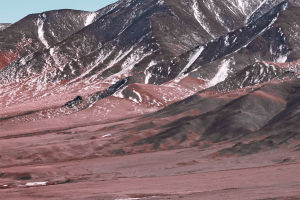The mudflats, also known as the intertidal zone, are the areas between the high and low tide levels along the coast subject to tidal inundation. This zone is in constant flux, as it is sometimes submerged and sometimes exposed.
The upper part is often exposed, while the lower part is frequently submerged. Mudflats are a vital land resource with a vast area, concentrated distribution, favorable location, and high potential for integrated development of agriculture, livestock, and fisheries.
These intertidal zones are crucial for aquaculture and agricultural production and are an invaluable asset for the development of the sea and marine industries. Moreover, mudflats contain a plethora of minerals, organisms, and other marine resources.
They are not only an important land and space resource, but they also serve as a transition zone between land and sea, undergoing dynamic changes.
In the direction of land, through polder reclamation and saltwater diversion, the mudflats can be transformed relatively quickly into land for agriculture, animal husbandry, and fishery livestock. In the direction of the sea, they can serve as a frontline position for the development of the ocean.
The main use of mudflats is reclamation, and China advocates and encourages their use in coastal areas for paddock reclamation to expand the area of arable land.
However, due to the severe shortage of fresh water along the coast and the high cost and low efficiency of converting mudflats into arable land, many mudflats have lost their "original purpose" of making fields and have become a "paradise" for mariculture.
It is challenging to realize the hope of making fields by polder or achieving a balance of land occupation and replenishment through polder. The reclaimed mudflats are saline, and their transformation into arable land requires a considerable amount of fresh water to be washed away over many years before they can be used for cultivation.
Natural coastal harbors and intertidal mudflats have traditionally been areas rich in biological resources.
However, as a result of the indiscriminate polders, these sites have been permanently destroyed, reducing the self-purifying capacity of the sea and increasing pollution levels.
It will cost more money to manage them in the future than to polder them, and this can affect the function of the harbor. This is mainly due to severe siltation caused by polder reclamation.
Experts have found that ten years after the closure of the cofferdam, the area of new siltation outside the embankment is equivalent to the original polder area, making the channel shallower and narrower.
Additionally, some polder projects require filling, excavation, and breaking rocks, resulting in exposed hills. In case of heavy rain, rolling turbidity into the sea can damage the ecological environment of the sea.
Mudflats are important ecosystems that serve as a transition zone between the land and the sea, providing a habitat for various plants and animals. They are also valuable resources for human activities, such as agriculture, aquaculture, and industry.
The mudflats are a valuable resource that requires careful management and protection.
Although polder reclamation can provide additional land for agriculture and other purposes, it can also lead to irreversible environmental damage.
Therefore, it is crucial to balance development needs with the preservation of natural resources to ensure a sustainable future.


